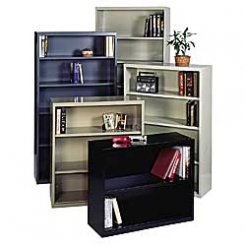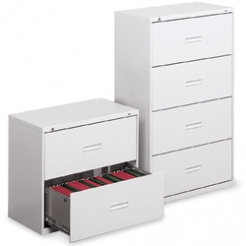 One of the unexpected victims of digitization is the common bookcase. Only a few years ago, bookcases in most offices were stuffed with manuals, reference books, and other materials that needed to be frequently accessed.
One of the unexpected victims of digitization is the common bookcase. Only a few years ago, bookcases in most offices were stuffed with manuals, reference books, and other materials that needed to be frequently accessed.
Today, however, practically every bit of information you need can be accessed faster, more efficiently, and from anywhere using your mobile devices, such as a smartphone or tablet.
In other words, “Books are so 20th Century!” Why not give yourself a little more office space by getting rid of the bookcases that probably no longer hold any books — or at least far fewer than they used to hold.
While you’re at it, you also might consider getting rid of the rows and rows of filing cabinets and storage space. Most businesses no longer have a need for holding onto piles of paper files when everything can be stored on electronic files that are cheaper, more accessible, and take up far less physical space.
Redesigning Office Space
The turn of the 21st Century has caused a sea change in office design. For many businesses, bookcases and file cabinets aren’t the only casualties of the switch to mostly web-based, digitized information storage.
Traditional office desks and chairs are far less common than they used to be. Many workers are realizing the benefits of being untethered from their workstations, using their mobile devices to do the same amount of work more efficiently from anywhere they like.
Offices themselves are also on the outs for many businesses. Why pay for overhead like rent, utilities, cleaning services, and employee benefits like break rooms when you can hire remote workers to provide the same or more productivity from home, or anywhere they choose to work.
Changing Attitudes toward the Traditional Workplace
 In fact, many businesses are questioning whether to hire office workers at all when many of the tasks they traditionally perform — such as filing, compiling reports, and providing customer service — can be outsourced to contract workers who often work for less and don’t require any benefits.
In fact, many businesses are questioning whether to hire office workers at all when many of the tasks they traditionally perform — such as filing, compiling reports, and providing customer service — can be outsourced to contract workers who often work for less and don’t require any benefits.
These are just the beginning of many changes coming to the way US businesses work. The trend toward automation likely will continue in the coming decades.
Robots already are making a huge dent in the number of manufacturing jobs held by humans. It’s only a matter of time before their built-in efficiencies are realized among the white collar set as well.
But all of this isn’t necessarily a pessimistic view of the future. Increased efficiencies that result in more productivity ultimately result in more profitability, a stronger economy, and a better overall standard of living.
